 W
WAida Yasuaki also known as Aida Ammei, was a Japanese mathematician in the Edo period.
 W
WArai Hakuseki was a Confucianist, scholar-bureaucrat, academic, administrator, writer and politician in Japan during the middle of the Edo period, who advised the shōgun Tokugawa Ienobu. His personal name was Kinmi or Kimiyoshi (君美). Hakuseki (白石) was his pen name. His father was a Kururi han samurai Arai Masazumi.
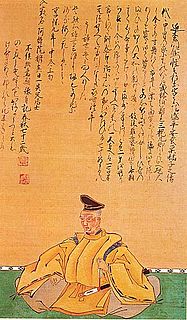 W
WChikamatsu Monzaemon was a Japanese dramatist of jōruri, the form of puppet theater that later came to be known as bunraku, and the live-actor drama, kabuki. The Encyclopædia Britannica has written that he is "widely regarded as the greatest Japanese dramatist". His most famous plays deal with double-suicides of honor bound lovers. Of his puppet plays, around 70 are jidaimono and 24 are sewamono. The domestic plays are today considered the core of his artistic achievement, particularly works such as The Courier for Hell (1711) and The Love Suicides at Amijima (1721). His histories are viewed less positively, though The Battles of Coxinga (1715) remains praised.
 W
WDate Munehiro or Chihiro(Japanese:伊達 宗広 or 千広; June 24, 1802 – May 18, 1877) was a Japanese samurai of Kii Domain and Scholar of Kokugaku, living during the late Edo and early Meiji periods. He was father of Mutsu Munemitsu(陸奥 宗光. His penname was Jitoku .
 W
WFujiwara Seika was a Japanese neo-Confucian philosopher and writer during the Edo period.
 W
WHanabusa Itchō was a Japanese painter, calligrapher, and haiku poet. He originally trained in the Kanō style, under Kanō Yasunobu, but ultimately rejected that style and became a literati (bunjin). He was also known as Hishikawa Waō and by a number of other art-names.
 W
WHanawa Hokiichi was a Japanese famous blind scholar and buddhist monk of the Edo period.
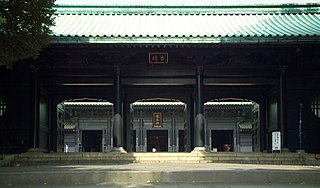 W
WHayashi Akira was an Edo period scholar-diplomat serving the Tokugawa shogunate in a variety of roles similar to those performed by serial Hayashi clan neo-Confucianists since the time of Tokugawa Ieyasu. He was the hereditary Daigaku-no-kami descendant of Hayashi Razan, the first head of the Tokugawa shogunate's neo-Confucian academy in Edo, the Shōhei-kō.
 W
WHayashi Gahō , also known as Hayashi Shunsai|林 春斎|, was a Japanese Neo-Confucian philosopher and writer in the system of higher education maintained by the Tokugawa bakufu during the Edo period. He was a member of the Hayashi clan of Confucian scholars.
 W
WHayashi Razan , also known as Hayashi Dōshun, was a Japanese Neo-Confucian philosopher and writer, serving as a tutor and an advisor to the first four shōguns of the Tokugawa bakufu. He is also attributed with first listing the Three Views of Japan. Razan was the founder of the Hayashi clan of Confucian scholars.
 W
WHayashi Shihei was a Japanese military scholar and a retainer of the Sendai Domain. His name is sometimes transliterated as Rin Shihei’'.
 W
WHosoi Heishū was a Japanese teacher of Confucian thought during the Edo period. He belonged to the eclectic school of Confucian philosophy, and his thought can be considered as the starting point of the eclectic brand of Confucianism.
 W
WHiraga Gennai was a Japanese polymath of the Edo period.
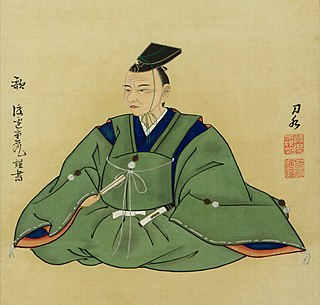 W
WHirata Atsutane was a Japanese scholar, conventionally ranked as one of the Four Great Men of Kokugaku (nativist) studies, and one of the most significant theologians of the Shintō religion. His literary name was Ibukinoya.
 W
WHayashi Hōkō , also known as Hayashi Nobutatsu, was a Japanese Neo-Confucian scholar, teacher and administrator in the system of higher education maintained by the Tokugawa bakufu during the Edo period. He was a member of the Hayashi clan of Confucian scholars.
 W
WIhara Saikaku was a Japanese poet and creator of the "floating world" genre of Japanese prose (ukiyo-zōshi).
 W
WItō Jinsai , who also went by the pen name Keisai, was a Japanese Confucian philosopher and educator. He is considered to be one of the most influential Confucian scholars of seventeenth century Japan, and the Tokugawa period (1600–1868) generally, his teachings flourishing especially in Kyoto and the Kansai area through the final years of the Tokugawa shogunate.
 W
WJippensha was the pen name of Shigeta Sadakazu, a Japanese writer active during the late Edo period of Japan. He lived primarily in Edo in the service of samurai, but also spent some time in Osaka as a townsman. He was among the most prolific yellow-backed novel writers of the late Edo period — between 1795 and 1801 he wrote a minimum of twenty novels a year, and thereafter wrote sharebon (洒落本), kokkeibon (滑稽本) and over 360 illustrated stories,.
 W
WKada no Azumamaro was a poet and philologist of the early Edo period. His ideas had a germinal impact on the nativist school of National Learning in Japan.
 W
WKaibara Ekken or Ekiken, also known as Atsunobu (篤信) was a Japanese Neo-Confucianist philosopher and botanist.
 W
WKawatake Mokuami (河竹黙阿弥) was a Japanese dramatist of Kabuki. It has been said that "as a writer of plays of Kabuki origin, he was one of the greatest, if not the greatest, Japan has ever known". He wrote 150 or so plays over the course of his 58-year career, covering a wide variety of themes, styles, and forms, including short dance pieces, period plays (jidaimono), contemporary genre pieces (sewamono), tragedies and comedies, as well as adaptations of foreign (Western) stories, though he is perhaps most famous for his shiranamimono, plays featuring sympathetic or tragic rogues and thieves. For the greater part of his career he wrote under the professional name Kawatake Shinshichi, only taking the name Mokuami on his retirement from the stage in 1881.
 W
WKeichū (契沖) was a Buddhist priest and a scholar of Kokugaku in the mid Edo period. Keichū's grandfather was a personal retainer of Katō Kiyomasa but his father was a rōnin from the Amagasaki fief. When he was 13, Keichū left home to become an acolyte of the Shingon sect, studying at Kaijō in Myōhōji, Imasato, Osaka. He subsequently attained the post of Ajari at Mount Kōya, and then became chief priest at Mandara-in in Ikutama, Osaka. It was at this time that he became friends with the poet-scholar Shimonokōbe Chōryū.
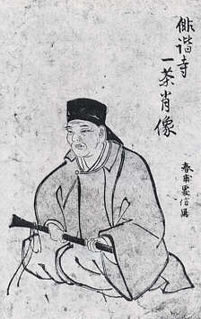 W
WKobayashi Issa was a Japanese poet and lay Buddhist priest of the Jōdo Shinshū sect known for his haiku poems and journals. He is better known as simply Issa (一茶), a pen name meaning Cup-of-tea. He is regarded as one of the four haiku masters in Japan, along with Bashō, Buson and Shiki — "the Great Four."
 W
WKumazawa Banzan was an adherent of a branch of Neo-Confucianism called Yangmingism, who lived during the early Edo period. His childhood name (yōmei) was Sashichirō (左七郞), his imina was Hakukei (伯継), also read Shigetsugu. His common name (azana) was Ryōkai , and he was commonly known by the personal names (tsūshō) as Jirōhachi (次郎八) or Suke'emon (助右衛門). His most common courtesy name (gō) was Sokuyūken (息游軒). His surname "Kumazawa" (熊沢) was changed to that of "Shigeyama" (蕃山) in 1660 and the latter, read in Sino-Japanese as "Banzan", became his posthumous courtesy title, by which even now he is commonly known.
 W
WKamo no Mabuchi was a Japanese poet and philologist of the Edo period.
 W
WMatsuo Bashō , born Matsuo Kinsaku , then Matsuo Chūemon Munefusa , was the most famous poet of the Edo period in Japan. During his lifetime, Bashō was recognized for his works in the collaborative haikai no renga form; today, after centuries of commentary, he is recognized as the greatest master of haiku. He is also well known for his travel essays beginning with “Records of a Weather-Exposed Skeleton” (1684), written after his journey west to Kyoto and Nara. Matsuo Bashō's poetry is internationally renowned, and, in Japan, many of his poems are reproduced on monuments and traditional sites. Although Bashō is justifiably famous in the West for his hokku, he himself believed his best work lay in leading and participating in renku. He is quoted as saying, "Many of my followers can write hokku as well as I can. Where I show who I really am is in linking haikai verses."
 W
WMatsuoka Shoan was an Edo era Japanese Confucianist and herbalist.
 W
WMotoori Norinaga was a Japanese scholar of Kokugaku active during the Edo period. He is probably the best known and most prominent of all scholars in this tradition.
 W
WMotoori Ōhira was a scholar of Kokugaku, and was the successor to Motoori Norinaga's school master. His pen name was Fuji no Kakitsu.
 W
WMukai Kyorai was a Japanese haikai poet, and a close disciple of Matsuo Bashō. A physician's son, he was born in Nagasaki, and connected with Bashō in the 1680s. In 1691 he was one of the compilers, together with Nozawa Bonchō, of the Sarumino Bashō-school collection. After Bashō's death he produced Kyoraishō, a rich source for the ideas of, and anecdotes about, his master.
 W
WNakae Tōju was a Japanese Confucian philosopher known as "the sage of Ōmi".
 W
WNamiki Gohei I was a Kabuki actor and playwright active in Kyoto, Edo and Osaka. He wrote over 100 plays, mostly in the genres of jidai-mono (historical) and sewa-mono.
 W
WNamiki Sōsuke, also known as Namiki Senryū, was a prominent Japanese playwright who wrote for both kabuki and bunraku. He produced around 47 bunraku plays, nearly 40 of them composed for jōruri, a particular form of musical narrative, and 10 kabuki plays. He is considered the second greatest Japanese playwright after Chikamatsu Monzaemon.
 W
WNozawa Bonchō was a Japanese haikai poet. He was born in Kanazawa, and spent most of his life in Kyoto working as a doctor. Bonchō was one of Matsuo Bashō's leading disciples and, together with Kyorai, he edited the Bashō school's Monkey's Raincoat (Sarumino) anthology of 1689. He participated in numerous renku with Bashō and other members of his Shōmon school.
 W
WOgata Kōan was a Japanese physician and rangaku scholar in late Edo period Japan, noted for establishing an academy which later developed into Osaka University. Many of his students subsequently played important roles in the Meiji Restoration and the westernization of Japan in the Meiji period. His true name was Ogata Koreaki or Ogata Akira ; the name of Kōan was his courtesy name.
 W
WOgyū Sorai , pen name Butsu Sorai, was a Japanese Confucian philosopher. He has been described as the most influential such scholar during the Tokugawa period. His primary area of study was in applying the teachings of Confucianism to government and social order. He responded to contemporary economic and political failings in Japan, as well as the culture of mercantilism and the dominance of old institutions that had become weak with extravagance. Sorai rejected the moralism of Song Confucianism and instead looked to the ancient works. He argued that allowing emotions to be expressed was important and nurtured Chinese literature in Japan for this reason. Sorai attracted a large following with his teachings and created the Sorai school, which would become an influential force in further Confucian scholarship in Japan.
 W
WŌshio Heihachirō was a former yoriki and a Neo-Confucianist scholar of the Wang Yangming school in Osaka. Despite working for the government, he was openly against the Tokugawa regime. He is known for his role as leader in the rebellion against the Tokugawa shogunate.
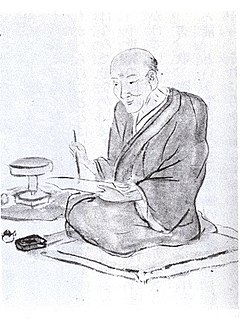 W
WŌtagaki Rengetsu was a Buddhist nun who is widely regarded to have been one of the greatest Japanese poets of the 19th century. She was also a skilled potter and painter and expert calligrapher.
 W
WRikei was a Japanese noble lady, calligrapher, poet and scholar. She was the eldest daughter of Katsunuma Nobutomo, a samurai of the Sengoku period. She lived as a nun on Daizen-ji temple at Mount Kashiwao and is most notable for her military history, Rikei-ni no Ki, or "Nun Rikei’s Account."
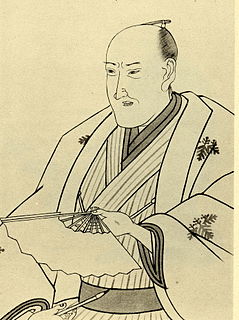 W
WKikuchi Hisanori , better known by his pen name Shikitei Sanba , was a Japanese comic writer of the Edo period.
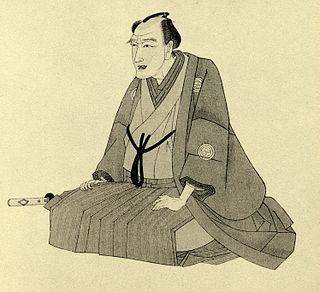 W
WSantō Kyōden was a Japanese poet, writer and artist in the Edo period. His real name was Iwase Samuru , and he was also known popularly as Kyōya Denzō . He is the brother of Santō Kyōzan.
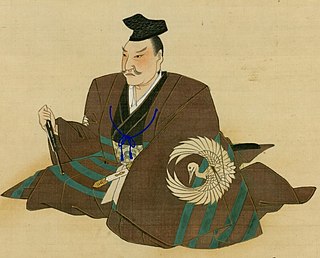 W
WSeki Takakazu , also known as Seki Kōwa , was a Japanese mathematician and author of the Edo period.
 W
WShiba Sonome was a Japanese zen poet. She was an acquaintance and friend of Matsuo Bashō, and their correspondence is a treasure of zen and haiku history. On a final visit in 1694, Bashō paid homage to her in a haiku, hiragiku no me ni tatete miru chiri mo nashi, 白菊の目に立てゝ見る塵もなし, in the eye of a white chrysanthemum, there is not a speck of dust.
 W
WSugita Genpaku was a Japanese physician and scholar known for his translation of Kaitai Shinsho and a founder of Rangaku and ranpō in Japan. He was one of the first Japanese scholars in Edo to study the Dutch language and is credited with being one of the first Japanese physicians to study Western medical teachings in Japan.
 W
WTakarai Kikaku also known as Enomoto Kikaku, was a Japanese haikai poet and among the most accomplished disciples of Matsuo Bashō. His father was an Edo doctor, but Kikaku chose to become a professional haikai poet rather than follow in his footsteps.
 W
WTakayama Hikokurō was a Japanese samurai and historian, and one of the early proponents of the sonnō jōi movement which became highly influential during the Bakumatsu period in the events leading to them Meiji restoration. He was later known as one of "Three Excelling Men of the Kansei Period". His Dharma name was Shōin Ihaku Koji (松陰以白居士).
 W
WKyokutei Bakin was a late Japanese Edo period gesaku author best known for works such as Nansō Satomi Hakkenden and Chinsetsu Yumiharizuki. Both are outstanding examples of nineteenth-century yomihon, or "books for reading".
 W
WTenjiku Tokubei was a Japanese adventurer and writer of the early 17th century. He traveled to Southeast and South Asia, hence his "Tenjiku" nickname.
 W
WTokugawa Nariaki was a prominent Japanese daimyō who ruled the Mito Domain and contributed to the rise of nationalism and the Meiji Restoration.
 W
WUeda Akinari or Ueda Shūsei was a Japanese author, scholar and waka poet, and a prominent literary figure in 18th-century Japan. He was an early writer in the yomihon genre and his two masterpieces, Ugetsu Monogatari and Harusame Monogatari, are central to the canon of Japanese literature.
 W
WUejima Onitsura was a Japanese haiku poet of the Edo period, famous in the Osaka region for his haiku poetry. Belonging to the Danrin school of Japanese poetry, Uejima is credited of helping to define and exemplify Bashō's style of poetry.
 W
WYamaga Sokō was a Japanese philosopher and strategist under the Tokugawa shogunate. As a scholar he applied the Confucian idea of the "superior man" to the samurai class of Japan. This became an important part of the samurai way of life and code of conduct.
 W
WYamamoto Tsunetomo , also read Yamamoto Jōchō, was a samurai of the Saga Domain in Hizen Province under his lord Nabeshima Mitsushige.
 W
WYamazaki Ansai was a Japanese philosopher and scholar. He began his career as a Buddhist monk, but eventually came to follow the teachings of Neo-Confucian Zhu Xi. He combined Neo-Confucian ideas with Shinto to create Suika Shinto.
 W
WYokoi Yayū was a Japanese samurai best known for his haibun, a scholar of Kokugaku, and haikai poet. He was born Yokoi Tokitsura , and took the pseudonym Tatsunojō. His family are believed to be descendants of Hōjō Tokiyuki.
 W
WYokoi Kinkoku , a disciple of Yosa Buson, was a famous Japanese poet and painter from the Edo period. He was also a Buddhist monk.
 W
WYosa Buson or Yosa no Buson was a Japanese poet and painter of the Edo period. Along with Matsuo Bashō and Kobayashi Issa, Buson is considered among the greatest poets of the Edo Period.
 W
WYoshida Mitsuyoshi , also known as Yoshida Kōyū, was a Japanese mathematician in the Edo period. His popular and widely disseminated published work made him the most well known writer about mathematics in his lifetime.